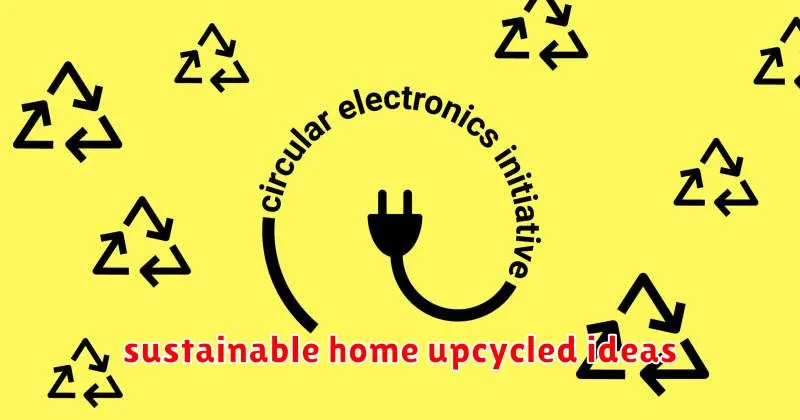This article explores the exciting world of sustainable home design using upcycled materials. Discover how incorporating recycled and repurposed elements can create beautiful, eco-friendly, and cost-effective homes. Learn about innovative techniques and design strategies that minimize environmental impact while maximizing aesthetic appeal, transforming discarded materials into stunning sustainable architecture. We will delve into the environmental benefits, the economic advantages, and the creative possibilities of upcycled home building.
Recycled Glass Wall Art
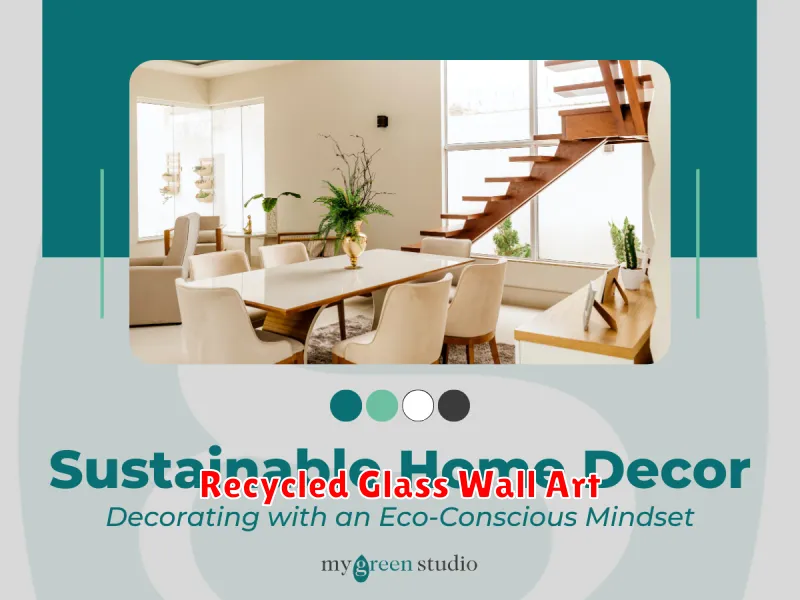
Recycled glass wall art offers a beautiful and sustainable way to decorate your home. Broken glass, discarded bottles, and other glass waste can be transformed into stunning mosaics, intricate designs, or even functional pieces like mirrors and shelves. This upcycling process not only reduces waste sent to landfills but also creates unique, personalized artwork.
The creative possibilities are vast. Color and texture are key elements, allowing for a wide range of artistic expressions. From vibrant, multicolored mosaics to subtle, monochromatic designs, recycled glass wall art can complement any interior style. The process itself can be a rewarding DIY project, further emphasizing the sustainable and personal nature of the art.
By choosing recycled glass wall art, homeowners contribute to a circular economy and demonstrate a commitment to environmentally responsible design. The inherent beauty of the material, coupled with its sustainable origins, makes it a compelling choice for those seeking both aesthetic appeal and eco-conscious living.
Wooden Pallet Shelving
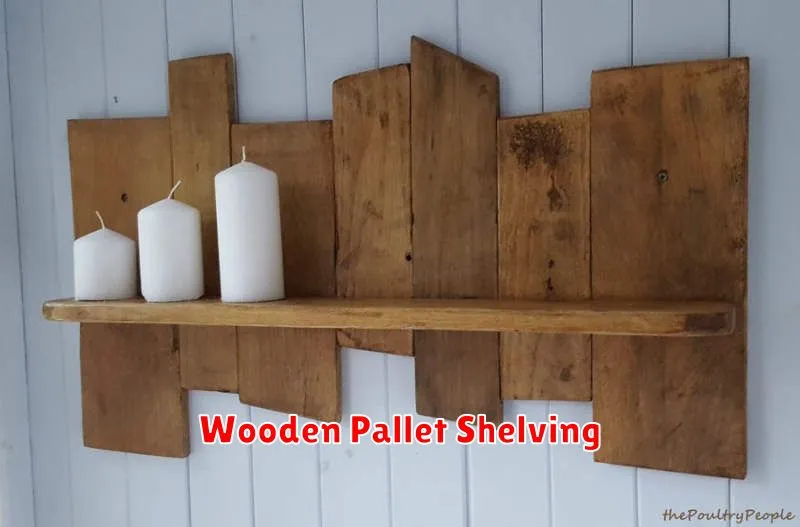
Wooden pallet shelving offers a remarkably sustainable and cost-effective solution for home storage. These readily available, often discarded pallets, can be repurposed into stylish and functional shelving units with minimal effort. Simple sanding and a coat of paint or stain are all that’s typically required to transform these reclaimed materials into attractive home décor pieces.
The environmental benefits are significant. Using reclaimed pallets diverts waste from landfills, reducing the demand for newly harvested lumber and minimizing the associated carbon footprint. This makes pallet shelving a truly green choice, aligning perfectly with sustainable home design principles. The inherent rustic charm adds a unique aesthetic appeal to any room.
Beyond its sustainability and affordability, wooden pallet shelving offers impressive versatility. Its adaptable design can easily accommodate various storage needs, from books and plants to decorative items and tools. With a little creativity, pallets can be customized to fit any space, showcasing the potential of upcycled materials in creating beautiful and functional home furnishings.
Fabric Scrap Cushions
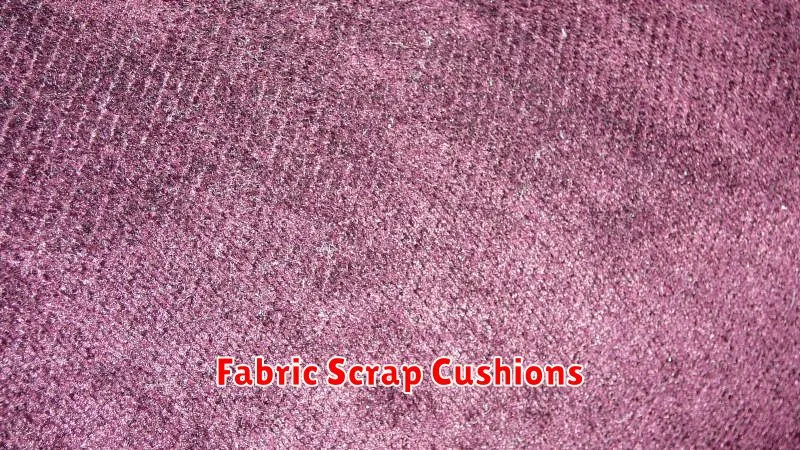
Fabric scrap cushions offer a sustainable and stylish solution for home décor. By repurposing leftover fabrics from sewing projects or sourcing discarded textiles, you can create unique and comfortable cushions while minimizing textile waste. This upcycling process reduces the demand for new materials, contributing to a more environmentally friendly approach to home design.
The creation of these cushions provides an opportunity for creative expression. Various fabrics, patterns, and textures can be combined to produce one-of-a-kind pieces that reflect personal style. Furthermore, the process is relatively simple, making it an accessible project for individuals with varying levels of sewing experience. Even basic sewing skills allow for the creation of attractive and functional cushions.
Beyond their aesthetic appeal, fabric scrap cushions also contribute to a more sustainable lifestyle. By giving new life to discarded materials, you actively participate in reducing textile waste and its environmental impact. This aligns with the principles of sustainable living and responsible consumption, demonstrating a commitment to environmentally conscious home design.
Upcycled Mason Jar Planters
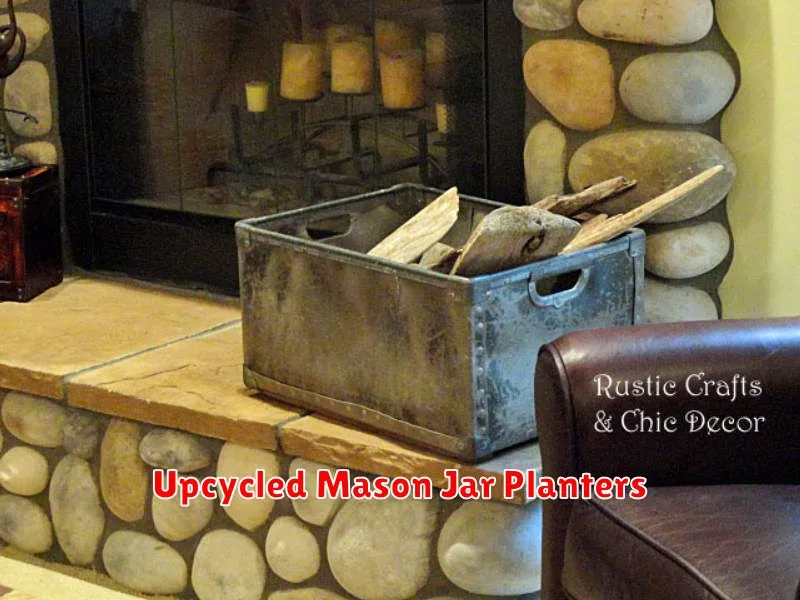
Upcycled mason jar planters offer a simple yet effective way to incorporate sustainable practices into home design. These readily available glass jars, often discarded after use, can be transformed into charming and functional containers for a variety of plants, adding a touch of rustic elegance to any indoor or outdoor space. Their transparent nature allows for easy observation of plant growth and watering needs.
The process of creating these planters is straightforward. Clean and dry jars can be decorated using various techniques, from painting and decoupage to adding twine or lace for a more personalized aesthetic. Drainage holes are easily created using a drill or even a nail and hammer, ensuring healthy plant growth by preventing waterlogging. The versatility of mason jars allows for a wide range of plant choices, from herbs and succulents to small flowering plants.
By repurposing mason jars, you contribute to waste reduction and promote a circular economy. This eco-friendly approach not only reduces your environmental footprint but also provides a cost-effective and aesthetically pleasing way to enhance your home’s decor with a touch of sustainable charm. The simple act of transforming discarded items into beautiful planters demonstrates a commitment to sustainable home design and mindful consumption.
Driftwood Furniture Projects
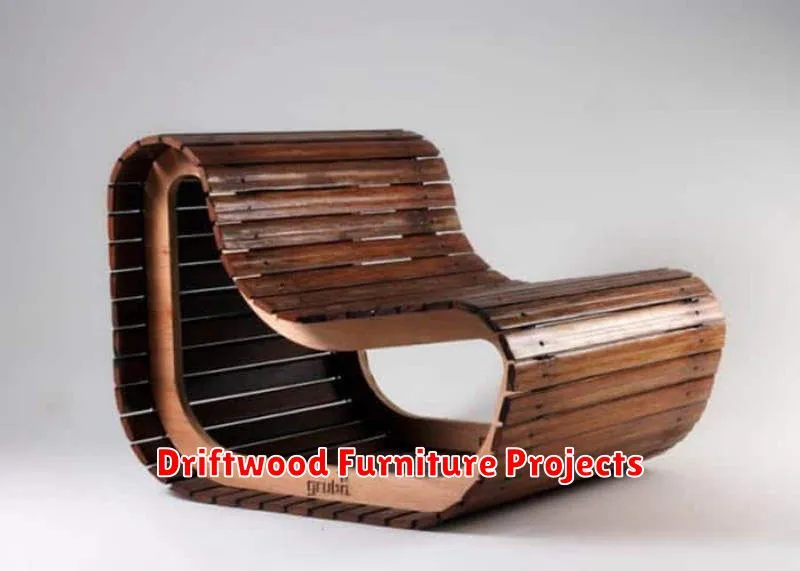
Driftwood, salvaged from coastlines, offers a unique and sustainable material for furniture projects. Its natural weathering process creates unique textures and colors, resulting in one-of-a-kind pieces. The inherent durability of driftwood, especially when properly treated, ensures lasting furniture, contributing to a reduced environmental impact compared to newly harvested wood.
Numerous projects are possible with driftwood, ranging from simple shelving units and rustic coffee tables to more intricate designs like chairs and benches. The natural shapes and sizes of the wood pieces often dictate the project’s design, fostering creative problem-solving and resulting in truly unique furniture pieces. Careful planning and preparation, including cleaning and treating the wood, are crucial for successful project completion.
Incorporating driftwood furniture into a home design contributes significantly to sustainable living. By utilizing reclaimed materials, you reduce the demand for newly harvested timber, minimizing deforestation and its associated environmental consequences. The rustic charm and individuality of driftwood furniture add a distinct aesthetic, complementing sustainable home design principles with unique style.
Tin Can Herb Gardens
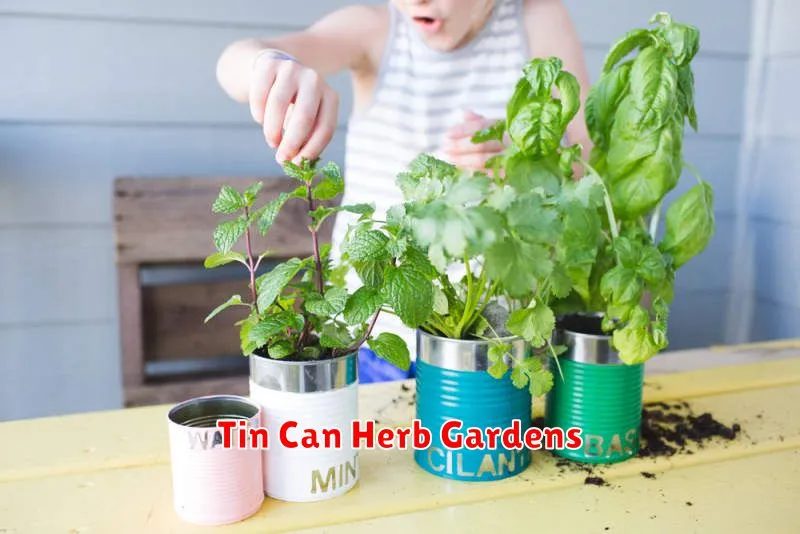
Tin can herb gardens offer a simple yet effective way to incorporate sustainable practices into home design. Upcycling empty tin cans, typically destined for landfills, reduces waste and provides charming, functional containers for growing herbs. The process involves cleaning and preparing the cans, adding drainage holes, and filling them with suitable potting mix. This method is both environmentally friendly and cost-effective.
Several advantages arise from utilizing tin cans for herb cultivation. They are readily available, requiring minimal initial investment. Their compact size makes them ideal for small spaces, balconies, or windowsills, maximizing vertical gardening opportunities. Furthermore, the metal material retains heat effectively, promoting optimal growth, especially in cooler climates. Proper preparation, including rust prevention and drainage, ensures the longevity of these makeshift planters.
By cultivating a tin can herb garden, homeowners actively contribute to a more sustainable lifestyle. This method not only reduces waste but also provides fresh, homegrown herbs, decreasing reliance on commercially produced options with their associated environmental impacts. The visual appeal of these upcycled planters adds a unique aesthetic element to any home’s decor, showcasing the beauty of resourcefulness and sustainable design principles.
Reclaimed Wood Tables
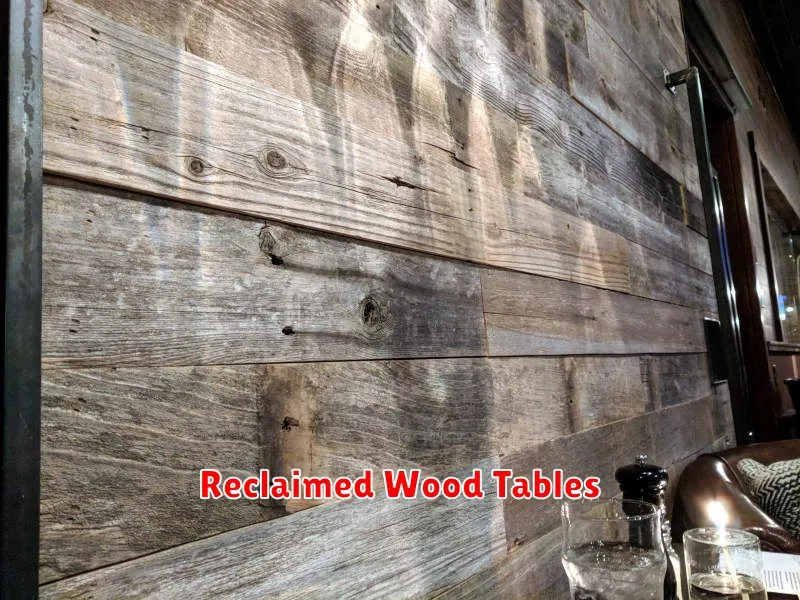
Reclaimed wood tables offer a unique blend of sustainability and style in home design. Using salvaged wood reduces the demand for newly harvested timber, minimizing deforestation and its environmental consequences. The inherent character of reclaimed wood, with its varied textures and natural imperfections, adds a rustic charm and unique visual appeal to any space.
The durability of reclaimed wood is another key advantage. Often sourced from old buildings or structures, these materials have already weathered the test of time, demonstrating their resilience and strength. Properly treated and constructed, a reclaimed wood table can last for generations, becoming a cherished heirloom piece.
Furthermore, incorporating reclaimed wood tables supports a circular economy. By giving new life to old materials, we reduce waste and lessen our environmental footprint. This aligns perfectly with the principles of sustainable home design, allowing homeowners to express their commitment to eco-conscious living through aesthetically pleasing and functional furniture choices.
Bottle Edging for Gardens
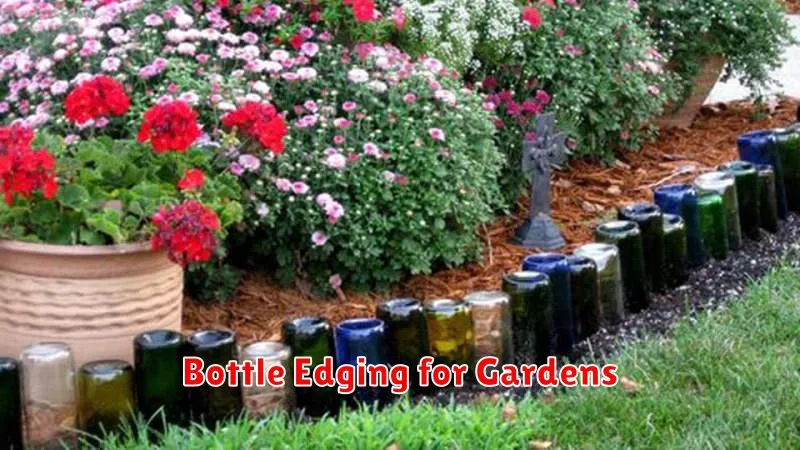
Bottle edging offers a sustainable and visually appealing alternative to traditional garden borders. By repurposing discarded plastic bottles, this method reduces landfill waste and provides a cost-effective solution for defining garden beds. The process involves cleaning and partially burying the bottles, creating a durable and flexible edge that prevents soil erosion and keeps weeds at bay.
Preparation is key to a successful bottle edge. Bottles should be thoroughly cleaned and the labels removed. Depending on the bottle’s size and shape, you may need to cut them to create uniform pieces for a neat appearance. Consider the depth required to adequately restrain the soil and plan accordingly. Dig a trench to accommodate the bottles, ensuring they are firmly placed and stable to prevent shifting over time.
Beyond its environmental benefits, bottle edging presents opportunities for creativity. Different colored bottles can create interesting patterns or accents within the garden design. This low-maintenance solution offers a charming and eco-conscious way to enhance any outdoor space, demonstrating a commitment to sustainable landscaping practices.
DIY Candle Holders
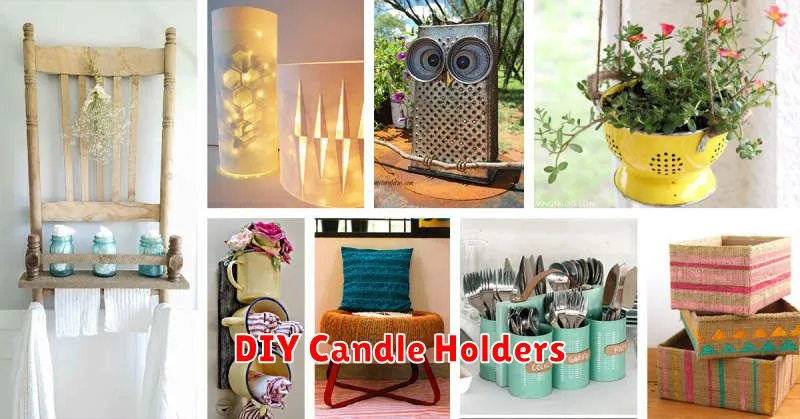
Transforming recycled materials into elegant candle holders is a simple yet effective way to embrace sustainable home design. Numerous everyday items can be repurposed, such as glass jars, tin cans, or even wine bottles. Cleaning and preparing these items is the first crucial step, ensuring a safe and aesthetically pleasing final product.
The creative possibilities are vast. Glass jars can be adorned with paint, twine, or lace for a rustic charm. Metal cans, after thorough cleaning and sanding, can be given a modern look with a coat of spray paint or embellished with decoupage techniques. Wine bottles can be simply cleaned and used as is, showcasing the elegance of the recycled glass.
Creating these DIY candle holders not only reduces waste but also adds a personalized touch to your home décor. The process itself is rewarding, allowing for experimentation with different materials and styles to achieve a unique aesthetic that aligns with your personal preferences and contributes to a more sustainable lifestyle.
Eco-Friendly Plant Racks
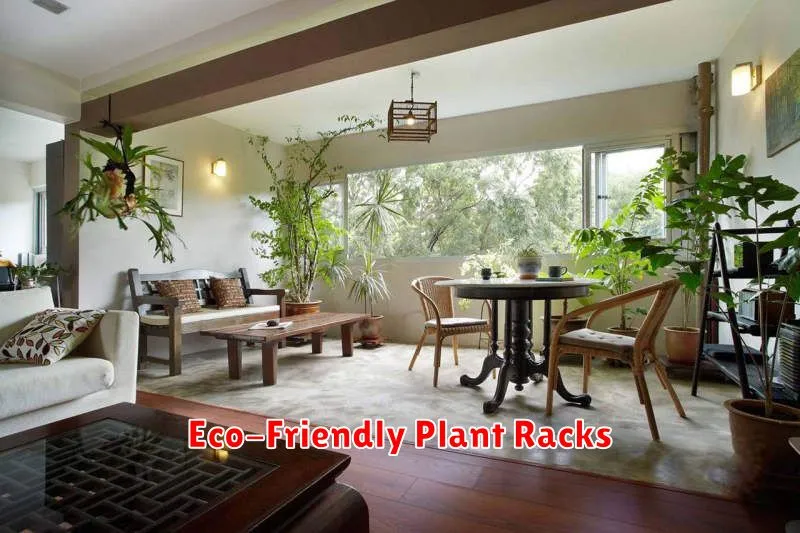
Incorporating plants into your home design offers numerous benefits, from improved air quality to enhanced aesthetic appeal. However, the plant racks themselves can contribute to environmental waste. Fortunately, sustainable alternatives abound. By utilizing upcycled materials, you can create beautiful and functional plant racks while minimizing your environmental impact.
Eco-friendly plant rack options are diverse and readily achievable. Repurposed pallet wood, for example, provides a rustic charm, easily assembled into various designs. Old ladders can be transformed into vertical plant displays, maximizing space while adding a touch of vintage elegance. Even discarded wine crates offer a unique and charming way to showcase your greenery.
The benefits extend beyond the reduced environmental footprint. Creating your own plant racks allows for customization, ensuring a perfect fit for your space and personal style. This DIY approach not only saves money but also offers a rewarding and creative experience. The inherent sustainability of these options contributes to a healthier home environment and a more responsible approach to interior design.

